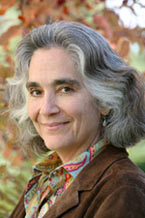
Handy Links
SLAC News Center
SLAC Today
- Subscribe
- Archives: Feb 2006-May 20, 2011
- Archives: May 23, 2011 and later
- Submit Feedback or Story Ideas
- About SLAC Today
SLAC News
Lab News
- Interactions
- Lightsources.org
- ILC NewsLine
- Int'l Science Grid This Week
- Fermilab Today
- Berkeley Lab News
- @brookhaven TODAY
- DOE Pulse
- CERN Courier
- DESY inForm
- US / LHC
SLAC Links
- Emergency
- Safety
- Policy Repository
- Site Entry Form

- Site Maps
- M & O Review
- Computing Status & Calendar
- SLAC Colloquium
- SLACspeak
- SLACspace
- SLAC Logo
- Café Menu
- Flea Market
- Web E-mail
- Marguerite Shuttle
- Discount Commuter Passes
-
Award Reporting Form
- SPIRES
- SciDoc
- Activity Groups
- Library
Stanford
Around the Bay
From the Director: Ray Orbach's Visit to SLAC
 Ray Orbach visited SLAC this week in what will probably be his last official visit to the Laboratory as Undersecretary for Science in the Department of Energy. Ray's most recent visit before this came at the time of the Linac Coherent Light Source (LCLS) groundbreaking, so yesterday was a wonderful opportunity for him to see the tremendous progress in LCLS construction. He also made his first visit to the Kavli Building and was able to interact with some of the scientists at the lab.
Ray Orbach visited SLAC this week in what will probably be his last official visit to the Laboratory as Undersecretary for Science in the Department of Energy. Ray's most recent visit before this came at the time of the Linac Coherent Light Source (LCLS) groundbreaking, so yesterday was a wonderful opportunity for him to see the tremendous progress in LCLS construction. He also made his first visit to the Kavli Building and was able to interact with some of the scientists at the lab.
This was also an opportunity for us to thank him for his dedicated service over the past six years. Ray was sworn in as the Director of the Office of Science on March 14, 2002, two weeks before I started working at SLAC. I have not known an Office of Science without Ray at the helm.
In his tenure as Director of the Office of Science and Undersecretary for Science, Ray has been a fierce advocate for the physical sciences. Ray has been a vocal champion of the critically important role that DOE plays in supporting the physical sciences. The national profile of the physical sciences, and the recognition of their importance to society, are much more widely appreciated now than they were six years ago, thanks in part to the energy of Ray's advocacy.
SLAC is very different today than it was six years ago and the changes are only beginning. We are no longer operating a major accelerator-based user facility for particle physics but the LCLS already is producing a beam at the end of the linac that can reliably ensure lasing at 15 angstroms when the undulators are installed. We are confident that the goal of one angstrom coherent X-rays will follow. The Gamma-ray Large Area Space Telescope (GLAST) is scheduled to launch next week. SPEAR 3 is running reliably for users. Beautiful science results continue to flow from the analysis of the final BaBar data sets. Outstanding accelerator research continues that will define the future frontiers for particle physics and photon science.
Ray has overseen the changing mission of SLAC in his roles as director of Office of Science and Undersecretary for Science. He has had faith in us through challenging times. He has honored the history of this laboratory and recognized the spectacular successes of our past. He has also realized the enormous potential of our future and pushed us to be ambitious as we approached it. He encouraged us to build expansion capability into LCLS from the beginning. He personally engaged to help us recruit key leadership for our future including the Kavli Institute for Particle Astrophysics and Cosmology (KIPAC) and Photon Ultrafast Laser Science and Engineering (PULSE) leadership.
I'm not sure that any other laboratory in the complex has changed as quickly and decisively as SLAC. I'm very sure we could not have achieved this transformational change without Ray's very strong support. As a laboratory, our course forward is now clear. Our challenge is to capture the opportunities we have been offered.
I would like to conclude by quoting from Ray's American Association for the Advancement of Science talk in 2003, early in his tenure with the Office of Science. He wrote: "What we know is overwhelmed by what we don't know. We ask questions such as 'What are we made of?' and 'Where did we come from?' It is the essential optimism and, yes, fundamental arrogance of mankind that makes us believe we can discover the answers." This laboratory will be pushing back the frontiers of "what we don't know" for decades to come, thanks to Ray's strong support.